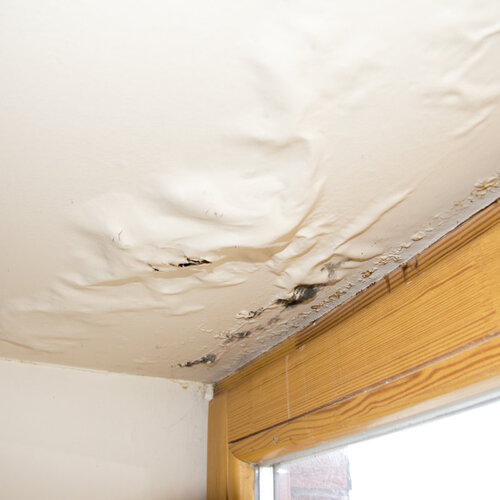Learn About the Six Principal Factors Behind Water Leaks in Your House
Learn About the Six Principal Factors Behind Water Leaks in Your House
Blog Article
This article in the next paragraphs on the subject of How Fast Water Damage Can Ruin Your Home is relatively enlightening. Check it out for yourself and see what you think about it.

Leaks not only create waste of water yet can also trigger unnecessary damages to your house and also advertise undesirable organic growth. Sadly, water leaks could go undetected because the majority of the pipework in our residence is hidden. By looking as well as comprehending for day-to-day situations that create leakages, you can safeguard your residence from future leaks as well as unnecessary damage. Today, we will take a look at six leakage causes that may be creating your pipes to trickle.
Trespassing roots
Most water leakages begin outside the house rather than inside it. If you see an abrupt decrease in water pressure, claim in your tap, take time to go out and also examine your lawn. You might discover damp spots or sinkholes in your backyard, which might indicate that tree roots are attacking water lines triggering water to seep out. You can have your plumber look for breach, particularly if you have trees or shrubs near your residential or commercial property.
Corroded water systems
As time goes by, your plumbing system ages and deterioration such as rust might begin eating away the pipelines. This might be the cause of discoloration or bending on your pipes. This calls for an examination with your plumber right away. Think about replacing the pipelines considering that they are at a higher risk of corrosion than the more recent models if our plumbing system is old.
Faulty Pipeline Joints
Pipeline joints can wear away over time, resulting in water leakages. If you have loud pipes that make ticking or banging sounds, particularly when the warm water is transformed on, your pipeline joints are probably under a whole lot of pressure.
Instant temperature level changes.
Extreme temperature level adjustments in our pipes can trigger them to expand and contract unexpectedly. This expansion and contraction may trigger splits in the pipes, specifically if the temperature level are below cold.
Poor Water Connectors
At times, a leak can be created by loose pipes as well as pipes that supply your home appliances. In situation of a water connections leak, you may discover water running straight from the supply line or pools around your home appliances.
Clogged Drains
Obstructed drains pipes could be bothersome and inconveniencing, however they can in some cases wind up creating an overflow bring about rupture pipes. Maintain removing any type of materials that might drop your drains pipes that can obstruct them to avoid such inconveniences.
All the above are reasons for leakages however not all water leaks result from plumbing leaks; some leaks could originate from roof covering leakages. All leakages must be repaired right away to avoid water damage.
Leakages not only cause waste of water yet can additionally trigger unnecessary damages to your house and advertise unwanted organic development. By looking and also understanding for day-to-day circumstances that create leaks, you can protect your residence from future leaks and also unneeded damage. Today, we will look at six leakage causes that may be triggering your pipes to drip.
At times, a leakage can be created by loose pipes and pipes that provide your devices. In case of a water connections leakage, you may see water running straight from the supply line or puddles around your devices.
How To Check For Water Leak In Your Home
How To Check for Leaks
The average household's leaks can account for nearly 10,000 gallons of water wasted every year and ten percent of homes have leaks that waste 90 gallons or more per day. Common types of leaks found in the home are worn toilet flappers, dripping faucets, and other leaking valves. These types of leaks are often easy to fix, requiring only a few tools and hardware that can pay for themselves in water savings. Fixing easily corrected household water leaks can save homeowners about 10 percent on their water bills.
To check for leaks in your home, you first need to determine whether you're wasting water and then identify the source of the leak. Here are some tips for finding leaks:
Take a look at your water usage during a colder month, such as January or February. If a family of four exceeds 12,000 gallons per month, there are serious leaks.
Check your water meter before and after a two-hour period when no water is being used. If the meter changes at all, you probably have a leak.
Identify toilet leaks by placing a drop of food coloring in the toilet tank. If any color shows up in the bowl after 10 minutes, you have a leak. (Be sure to flush immediately after the experiment to avoid staining the tank.)
Examine faucet gaskets and pipe fittings for any water on the outside of the pipe to check for surface leaks.
Undetected water leaks can happen without the home or business owner even realizing. If you suspect a water leak, but not able to find the source. It is time to contact a professional water leak detection service, The Leak Doctor.
How To Find a Water Leak In Your Home
https://www.leakdoctor.com/blog/How-To-Check-For-Water-Leak-In-Your-Home_AE197.html

I have been very inquisitive about How to detect water leaks in your home and I am assuming you enjoyed reading the page. Kindly take the time to distribute this content if you appreciated it. We appreciate reading our article about How to Find Water Leaks.
Schedule Free Estimate Report this page